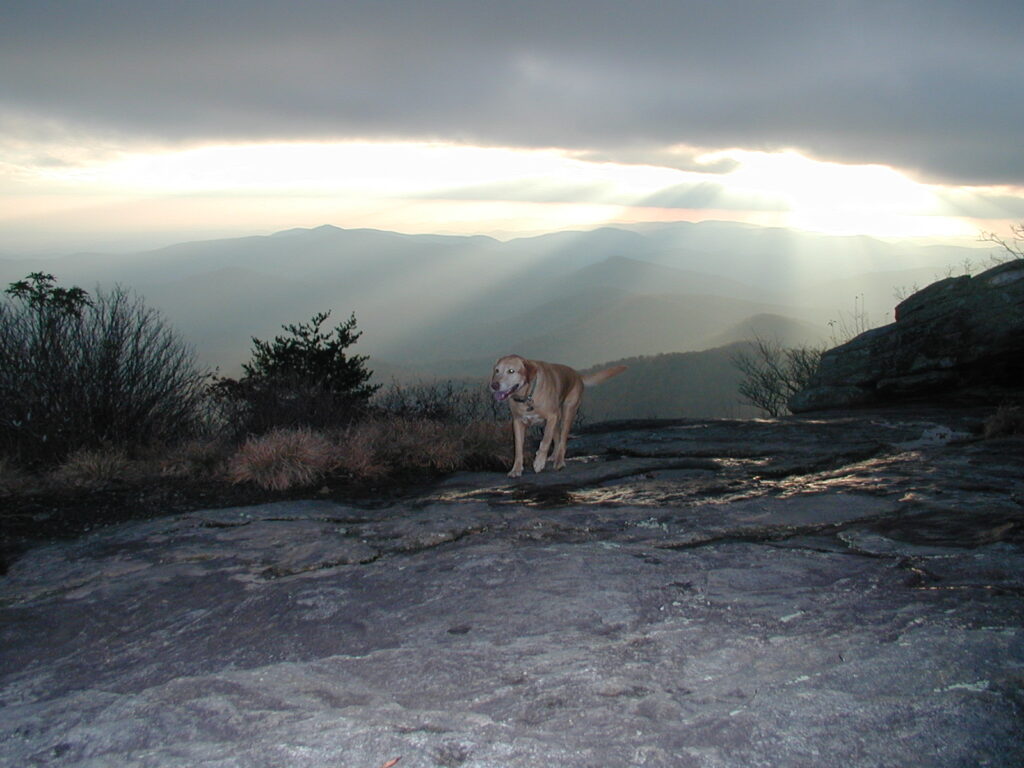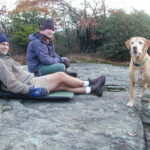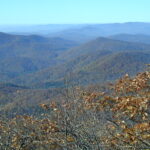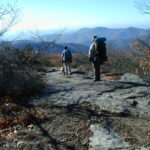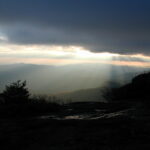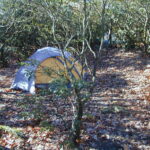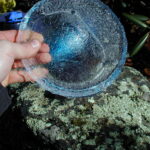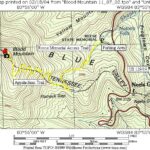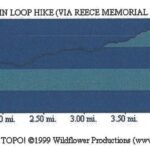Blood Mountain
Chattahoochee-Oconee National Forests
1755 Cleveland Highway
Gainesville, GA 30501
770 297-3000
The Chattahoochee National Forest is one of two National Forests in the State of Georgia, and it takes its name from the Chattahoochee River whose headwaters begin in the North Georgia mountains. The River and the area were given the name by the English settlers who heard it from the Indians that once lived here. The Blood Mountain Wilderness area received its designation in 1991, and it is a sub-section of the Chattahoochee National Forest. The wilderness area is bordered to the northwest by Georgia Highway 60 and the Blue Ridge mountain range, and to the northeast by Georgia Highway 19/129 and Neels Gap. Major trails in this area include the Appalachian Trail, Freeman Trail, the Dockery Lake/Miller Gap Trail, the Coosa Backcountry Trail, the Duncan Ridge Trail, The Bare Hair Trail, and the Slaughter Creek Trail.
Blood Mountain is the highest point on the Appalachian Trail in the state of Georgia, and it is a popular destination for both overnight and day hikers since there are magnificent views from a rock outcropping at the summit. Blood Mountain and nearby Slaughter Gap were once the site of a major battle between the Cherokee and the Creek Indians. The summit is also known for an old stone shelter built by the Civilian Conservation Core during the 1930’s. We started our hike to Blood Mountain from the Reece Memorial Parking Area off GA 19/129 near Neels Gap. It’s a steep climb to the summit at 4,461 feet but the views from a rock outcropping near the shelter are spectacular. Blood Mountain is the highest point on the Appalachian Trail in Georgia, and it is the second highest peak in the State (after Brasstown Bald.) As a result, the area is heavily used and no campfires are permitted near the summit. There are a number of side trails in this area, however, and a variety of hikes and campsites are available that use blue blazed side trails instead of the Appalachian Trail (where most of the foot traffic is focused).
- click for photos from this hike in the Blood Mountain Wilderness: November 7, 2002
- click for a detailed trip report for this backpacking trip to Blood Mountain: November 7, 2002 (password required)
- click for a trip report from this hike to the highest point on the A.T. in Georgia November 7, 2002 (password required)
- click for a Trails Illustrated map of this hike in the Chattahoochee National Forest
- click for a topographical map from this hike to Blood Mountain (password required)
- click for a profile map from this hike to Blood Mountain (password required)
- click for a map of trails around Blood Mountain (password required)
- click for a a trail map of the Appalachian Trail in Georgia (password required)
- click for a profile map of the Appalachian Trail in Georgia (password required)
- click for an ATC trail map from Woody Gap to Wolf Laurel Top Trail Map (password required)
- click for an ATC profile map from Woody Gap to Wolf Laurel Top (password required)
- click for a hike we did to Slaughter Gap and Blood Mountain in October 1998
- click for a hike to the nearby Woods Hole Shelter in November 2013
- click to access the guidebook Best Hikes With Dogs Georgia And South Carolina
which has details on this destination
